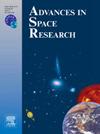基于PSO-LSTM的GNSS/INS组合导航系统误差补偿方法
IF 2.8
3区 地球科学
Q2 ASTRONOMY & ASTROPHYSICS
引用次数: 0
摘要
基于全球卫星导航系统和惯性导航系统(GNSS/INS)的组合导航系统可以为机载运动提供连续可靠的定位信息。高层建筑、峡谷高压塔等电磁干扰环境容易造成GNSS信号中断。GNSS定位信息的长期缺失将导致GNSS/INS系统导航精度的快速下降。为了解决这一问题,采用粒子群算法求解长短期记忆的最优值。设计了基于粒子群算法的LSTM网络模型(PSO-LSTM)。将其用于辅助基于卡尔曼滤波的GNSS/INS组合导航。在GNSS信号可用的情况下,利用载波动态信息和导航信息对PSO-LSTM模型进行训练。当GNSS信号不可用时,利用PSO-LSTM模型获取伪GNSS信号进行卡尔曼滤波测量更新。为了验证算法的有效性,进行了GNSS信号中断情况下的无人机飞行试验。将定位结果与传统LSTM模型进行了比较。当GNSS信号中断30 s时,LSTM模型的最大定位误差为4.142 m。PSO-LSTM模式为2.883 m,比LSTM模式减小30.4%。当GNSS信号中断60 s时,LSTM模型的最大定位误差为5.992 m。PSO-LSTM模式为2.898 m,比LSTM模式减少了51.2%。当GNSS信号多次中断时,LSTM模型的最大定位误差为11.362 m。PSO-LSTM模式为6.042 m,比LSTM模式减小46.8%。本文章由计算机程序翻译,如有差异,请以英文原文为准。
Error compensation method of GNSS/INS integrated navigation system based on PSO-LSTM
The integrated navigation system based on the Global Navigation Satellite System and Inertial Navigation System (GNSS/INS), can provide continuous and dependable positioning information for airborne motion. The GNSS signal outages are easily caused by electromagnetic interference environments such as high-rise buildings, and canyons high-voltage towers. A long period of missing GNSS positioning information will lead to a rapid decline in the navigation precision of the GNSS/INS system. In order to solve this problem, the optimum value of Long Short-Term Memory (LSTM) is obtained through Particle Swarm Optimization (PSO). An LSTM network model based on the PSO algorithm (PSO-LSTM) is designed. It is used to assist the integrated navigation of GNSS/INS based on Kalman Filter (KF). When GNSS signals are available, the PSO-LSTM model is trained with carrier dynamic information and navigation information. When GNSS signals are not available, the PSO-LSTM model is used to obtain pseudo-GNSS signals for Kalman Filter measurement updates. In order to verify the validity of the algorithm, unmanned aerial vehicle (UAV) flight tests of GNSS signal outages are performed. The results of the positioning are compared to the conventional LSTM model. When the GNSS signal experiences outages of 30 s, the maximum positioning error of the LSTM model is 4.142 m. The PSO-LSTM model is 2.883 m, which decreases by 30.4 % relative to LSTM. When the GNSS signal experiences outages of 60 s, the maximum positioning error of the LSTM model is 5.992 m. The PSO-LSTM model is 2.898 m, which decreases by 51.2 % relative to LSTM. When the GNSS signal experiences multiple outages, the maximum positioning error of the LSTM model is 11.362 m. The PSO-LSTM model is 6.042 m, which decreases by 46.8 % relative to LSTM.
求助全文
通过发布文献求助,成功后即可免费获取论文全文。
去求助
来源期刊

Advances in Space Research
地学天文-地球科学综合
CiteScore
5.20
自引率
11.50%
发文量
800
审稿时长
5.8 months
期刊介绍:
The COSPAR publication Advances in Space Research (ASR) is an open journal covering all areas of space research including: space studies of the Earth''s surface, meteorology, climate, the Earth-Moon system, planets and small bodies of the solar system, upper atmospheres, ionospheres and magnetospheres of the Earth and planets including reference atmospheres, space plasmas in the solar system, astrophysics from space, materials sciences in space, fundamental physics in space, space debris, space weather, Earth observations of space phenomena, etc.
NB: Please note that manuscripts related to life sciences as related to space are no more accepted for submission to Advances in Space Research. Such manuscripts should now be submitted to the new COSPAR Journal Life Sciences in Space Research (LSSR).
All submissions are reviewed by two scientists in the field. COSPAR is an interdisciplinary scientific organization concerned with the progress of space research on an international scale. Operating under the rules of ICSU, COSPAR ignores political considerations and considers all questions solely from the scientific viewpoint.
 求助内容:
求助内容: 应助结果提醒方式:
应助结果提醒方式:


